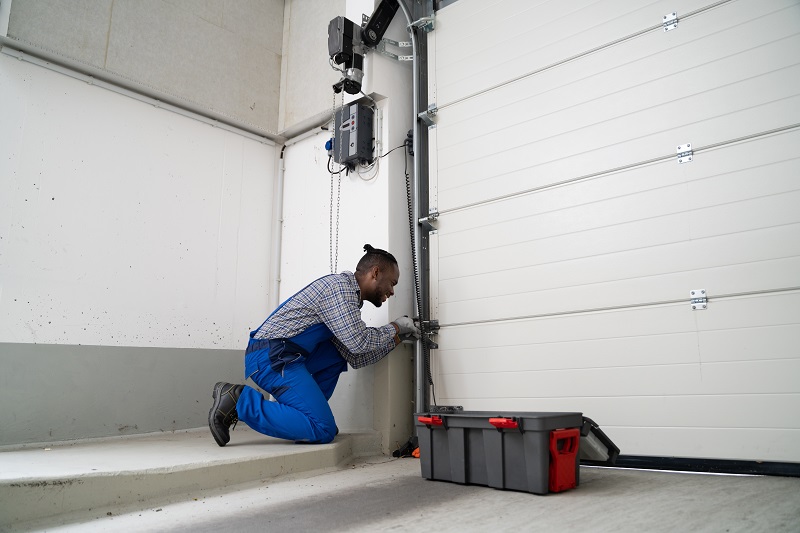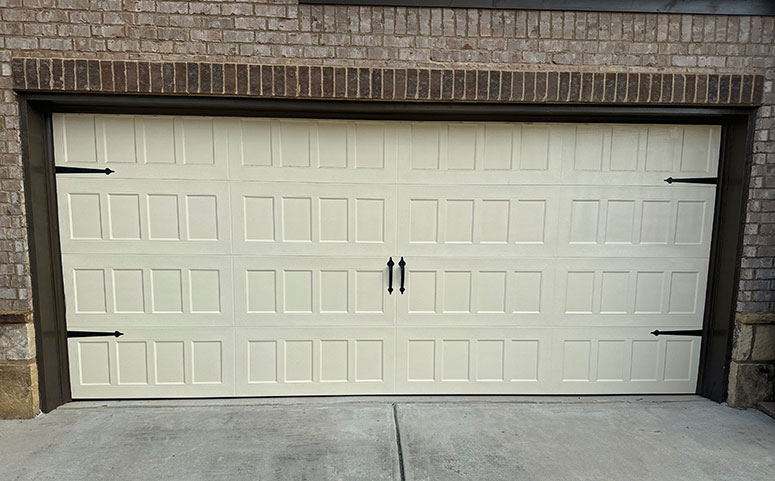Typical Garage Door Troubles and Exactly How to Take care of Them
Garage doors are essential for both protection and comfort, yet they commonly provide a range of usual problems that can annoy property owners. While some issues might show up simple to solve, others might require a much more nuanced understanding of garage door technicians.
Noisy Garage Door Procedure
A loud garage door procedure can be a significant source of inconvenience for homeowners, typically suggesting underlying mechanical problems. Such interruptions might originate from different causes, including damaged rollers, loose equipment, or not enough lubrication. Determining the resource of the noise is vital for efficient resolution.
Over time, these elements can wear away, leading to grinding or squeaking audios as the door relocations. Furthermore, loose bolts or screws in the door mechanism can produce rattling audios throughout procedure.
Another contributing factor is inadequate lubrication of the door's relocating parts. Using a high-grade lubricant to the tracks, springs, and rollers can significantly decrease friction and sound. House owners should execute this maintenance occasionally to keep optimum efficiency.
Lastly, the garage door opener may additionally generate sound because of its age or mechanical problems. If the sound continues regardless of attending to various other aspects, seeking advice from a specialist for an extensive examination and potential repair might be essential.
Door Will Not Open Up or Shut
Experiencing a garage door that will not open up or close can be exceptionally aggravating and usually signals a breakdown within the system. Several elements can add to this concern, and recognizing the origin is necessary for efficient resolution.

Next, check the safety sensors situated at the base of the door. These sensors can end up being misaligned or blocked by particles, protecting against the door from running properly. Tidy the sensing units with a soft cloth and guarantee they are aligned.
Additionally, the garage door's interior components must be assessed. Concerns such as a damaged springtime, worn-out rollers, or a harmed opener can restrain movement. If any kind of elements appear to be harmed, it may be recommended to seek advice from an expert for fixings.
Misaligned Tracks
To recognize imbalance, visually inspect the tracks for voids or unequal spacing. If you notice any type of inconsistencies, it is essential to deal with the problem quickly - garage door service. Begin by loosening the screws that protect the track to the wall, enabling adjustments. Very carefully touch the track back into its proper placement using a rubber mallet or a comparable tool, guaranteeing it is straight and level.
Normal maintenance, consisting of cleansing the tracks and click to find out more making sure rollers are in excellent problem, can protect against future misalignments. By addressing misaligned tracks quickly, you can recover the performance of your garage door and improve its longevity.
Broken Springs
Among the various components of a garage door system, broken springtimes are one of the most typical problems that can substantially hinder its capability. Garage door springs are essential for balancing the weight of the door, enabling smooth opening and closing. When a spring breaks, it can bring about a door that is tough to run or, in many cases, totally inoperable.
There are two main sorts of springtimes: torsion springtimes, which are placed over the door, and extension springs, found on either side. Indicators of a damaged springtime include a door that won't open, a noticeable void in the spring, or a loud sound during operation. Attempting to operate a garage door with a busted springtime can cause further damage to the door or the opener.
Fixing busted springtimes is not a do it yourself project; it requires specialized devices and competence because of the high stress entailed. It is recommended to speak with a specialist technician who can safely replace the springs and make sure the door is correctly balanced. Regular maintenance and inspections can assist prevent springtime failures and prolong the life expectancy of the garage door system.
Remote Control Issues

The primary step is to inspect the batteries in the push-button control. Replace them if they are weak or dead. If the remote still stops working to operate, examine the garage door opener to make certain that its sensing units are clean and unhampered. Dust, particles, or imbalance might impede the signal transmission in between the remote and the opener.
Interference from other digital gadgets can also impede remote capability. Ensure that neighboring gadgets, such as cordless routers or cordless phones, are not triggering disruptions. garage door service. If disturbance is suspected, try moving these devices additionally away from the garage door opener
In some instances, the remote might need to be reprogrammed. Speak with the manufacturer's guidelines to reset the remote control and integrate it with the garage door opener. If all else stops working and the remote remains to malfunction, take into consideration consulting an expert specialist for a comprehensive evaluation and prospective substitute of the remote or opener.
Verdict
Comments on “Budget-Friendly Garage Door Repair for Home and Industrial Doors”